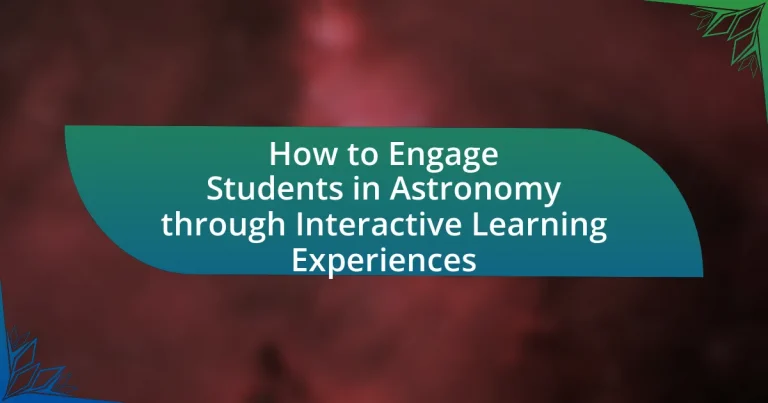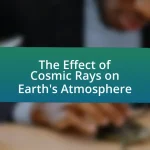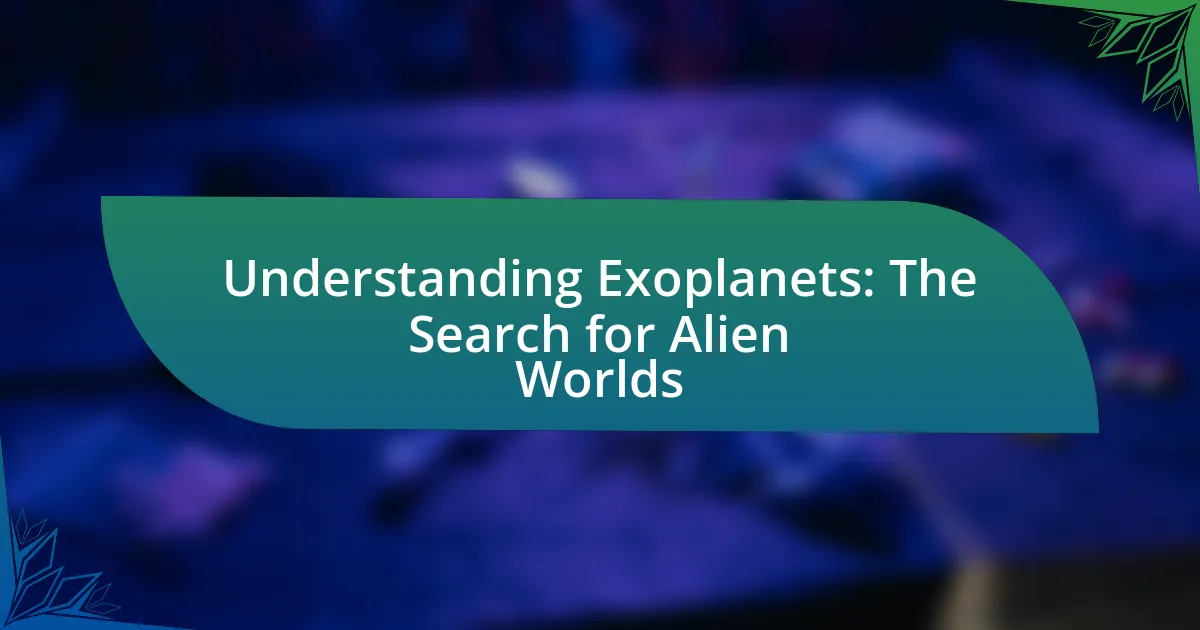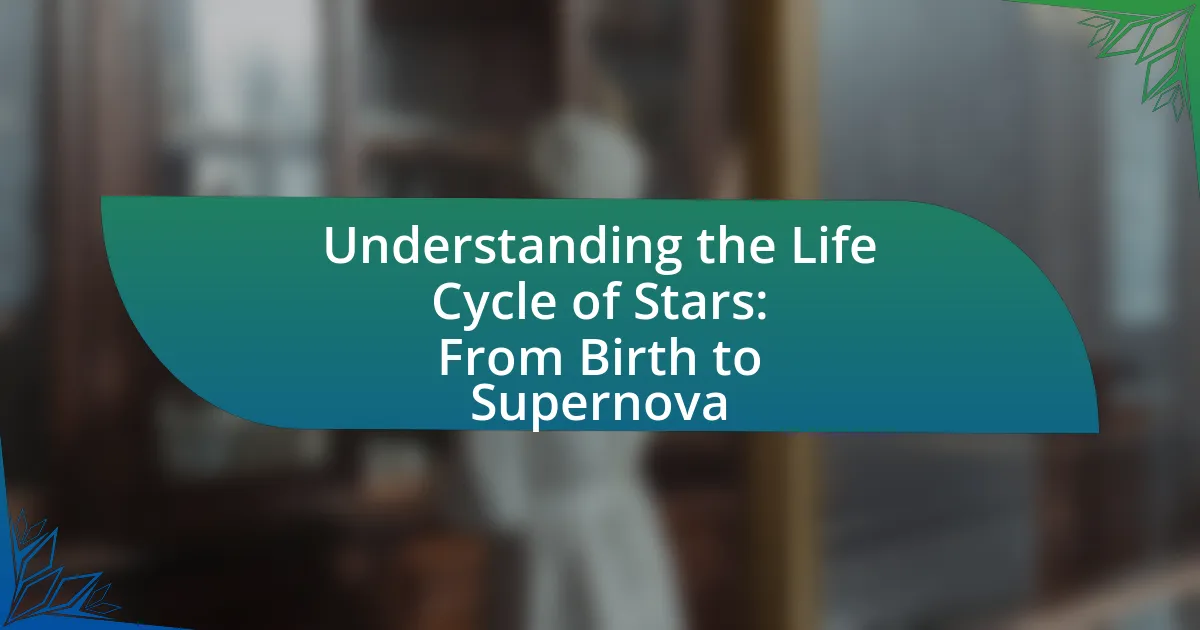The article focuses on enhancing student engagement in astronomy through interactive learning experiences. It outlines key principles such as active participation, collaboration, and experiential learning, which significantly improve retention and comprehension of complex astronomical concepts. The article discusses various interactive methods, including hands-on activities, simulations, and technology integration, highlighting their effectiveness in fostering deeper understanding and critical thinking skills. Additionally, it addresses the challenges educators face in implementing these strategies and offers insights into assessment methods to evaluate student engagement and learning outcomes in astronomy education.
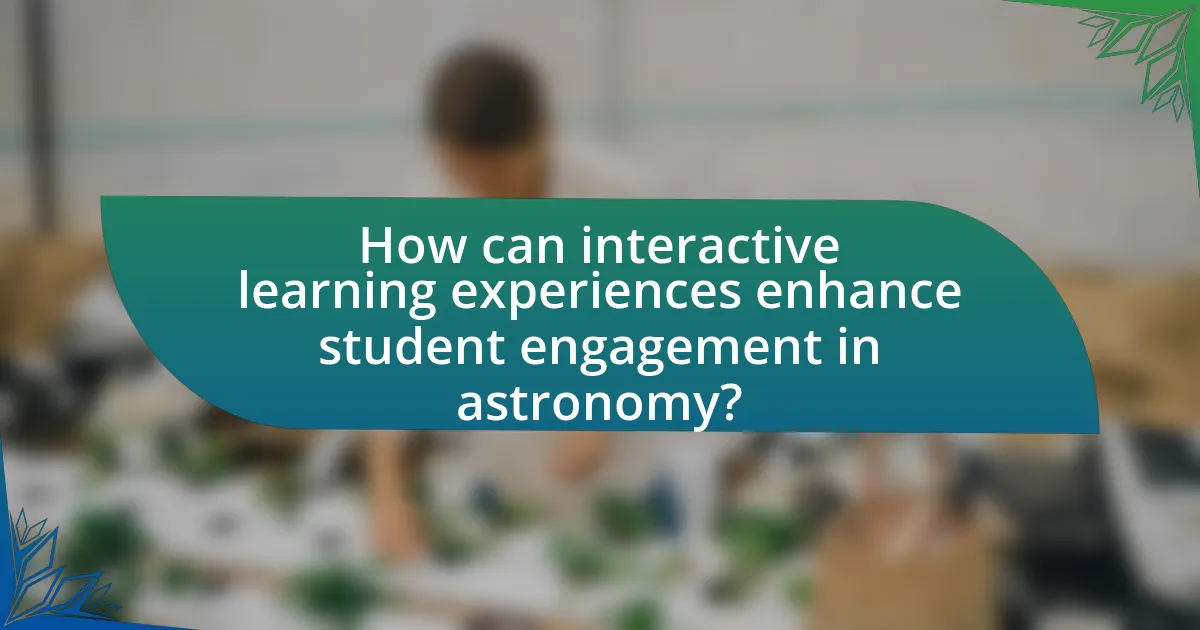
How can interactive learning experiences enhance student engagement in astronomy?
Interactive learning experiences enhance student engagement in astronomy by fostering active participation and facilitating deeper understanding of complex concepts. These experiences, such as simulations, hands-on activities, and collaborative projects, allow students to explore astronomical phenomena in a tangible way. Research indicates that students who engage in interactive learning demonstrate higher retention rates and improved problem-solving skills. For instance, a study published in the Journal of Astronomy & Earth Sciences Education found that students participating in interactive labs scored significantly higher on assessments compared to those in traditional lecture settings. This evidence supports the effectiveness of interactive methods in making astronomy more accessible and engaging for students.
What are the key principles of interactive learning in astronomy?
The key principles of interactive learning in astronomy include active engagement, collaboration, and experiential learning. Active engagement involves students participating in hands-on activities, such as simulations or observations, which enhance their understanding of astronomical concepts. Collaboration encourages students to work together, fostering communication and teamwork skills while exploring complex topics. Experiential learning allows students to apply theoretical knowledge in real-world contexts, such as using telescopes or software to analyze celestial data. These principles are supported by research indicating that interactive learning significantly improves retention and comprehension in science education, particularly in fields like astronomy.
How does active participation influence learning outcomes in astronomy?
Active participation significantly enhances learning outcomes in astronomy by fostering deeper engagement and comprehension among students. When students actively participate in hands-on activities, such as simulations or observational projects, they are more likely to retain information and develop critical thinking skills. Research conducted by the National Science Foundation indicates that students who engage in interactive learning experiences demonstrate improved problem-solving abilities and higher retention rates compared to those who learn passively. This evidence underscores the importance of active participation in achieving effective learning outcomes in astronomy.
What role does collaboration play in interactive astronomy learning?
Collaboration plays a crucial role in interactive astronomy learning by enhancing student engagement and fostering deeper understanding of complex concepts. When students work together, they share diverse perspectives and problem-solving approaches, which can lead to more comprehensive learning outcomes. Research indicates that collaborative learning environments improve critical thinking and retention of information, as students actively participate in discussions and hands-on activities. For instance, studies have shown that group projects in astronomy, such as collaborative telescope observations or data analysis, significantly increase students’ motivation and interest in the subject.
Why is student engagement crucial in astronomy education?
Student engagement is crucial in astronomy education because it enhances understanding and retention of complex concepts. Engaged students are more likely to participate actively in learning activities, which leads to deeper comprehension of astronomical phenomena. Research indicates that interactive learning experiences, such as hands-on activities and collaborative projects, significantly improve students’ grasp of scientific principles. For instance, a study published in the Journal of Astronomy & Earth Sciences Education found that students who participated in interactive learning showed a 30% increase in their understanding of key astronomy concepts compared to traditional lecture-based instruction. This evidence underscores the importance of fostering student engagement to facilitate effective learning in astronomy.
How does engagement impact students’ understanding of astronomical concepts?
Engagement significantly enhances students’ understanding of astronomical concepts by fostering active participation and curiosity. When students are actively engaged in learning activities, such as hands-on experiments or interactive simulations, they are more likely to retain information and develop a deeper comprehension of complex astronomical phenomena. Research indicates that students who participate in interactive learning experiences demonstrate improved conceptual understanding and problem-solving skills compared to those who engage in traditional lecture-based instruction. For instance, a study published in the Journal of Astronomy & Earth Sciences Education found that students involved in inquiry-based learning showed a 30% increase in their ability to explain astronomical concepts accurately. This evidence underscores the critical role of engagement in facilitating meaningful learning in astronomy.
What are the long-term benefits of engaging students in astronomy?
Engaging students in astronomy provides long-term benefits such as enhanced critical thinking skills, increased interest in STEM fields, and improved academic performance. Research indicates that students who participate in astronomy-related activities develop better problem-solving abilities and analytical skills, which are essential in various disciplines. For instance, a study published in the Journal of Astronomy & Earth Sciences Education found that students involved in hands-on astronomy projects showed a 30% increase in their science test scores compared to those who did not participate. Additionally, exposure to astronomy fosters curiosity and a sense of wonder about the universe, encouraging lifelong learning and exploration in science and technology careers.
What challenges do educators face in engaging students in astronomy?
Educators face several challenges in engaging students in astronomy, primarily due to the complexity of the subject matter and the lack of resources. The intricate concepts of astronomy, such as celestial mechanics and astrophysics, can be difficult for students to grasp, leading to disengagement. Additionally, many educators lack access to adequate teaching materials, such as telescopes or interactive software, which can hinder the ability to provide hands-on learning experiences. Research indicates that students are more engaged when they can interact with the subject matter, yet many classrooms do not have the necessary tools or technology to facilitate this engagement.
How can technology help overcome these challenges?
Technology can help overcome challenges in engaging students in astronomy by providing interactive learning tools such as virtual simulations, augmented reality applications, and online collaborative platforms. These tools enhance student engagement by allowing them to visualize complex astronomical concepts and participate in immersive experiences. For instance, platforms like Stellarium enable students to explore the night sky in real-time, while augmented reality apps can overlay celestial objects onto their physical environment, making learning more tangible. Research indicates that interactive learning experiences significantly improve student motivation and understanding, as evidenced by a study published in the Journal of Astronomy & Earth Sciences Education, which found that students using interactive simulations scored 30% higher on assessments compared to traditional learning methods.
What strategies can educators implement to enhance engagement?
Educators can enhance engagement by incorporating interactive learning experiences, such as hands-on activities, collaborative projects, and technology integration. These strategies actively involve students in the learning process, making the subject matter more relatable and stimulating. Research indicates that active learning techniques, like group discussions and problem-solving tasks, can increase student retention and understanding by up to 50%. Additionally, utilizing digital tools, such as simulations and virtual reality, allows students to explore astronomical concepts in immersive ways, further boosting their interest and participation.
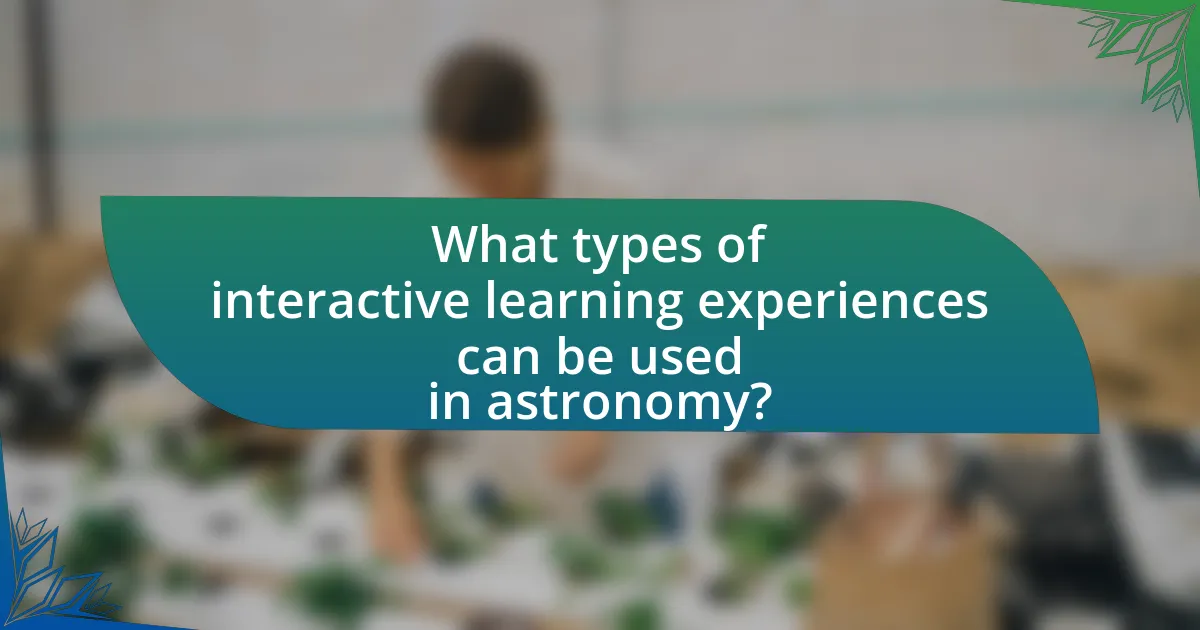
What types of interactive learning experiences can be used in astronomy?
Interactive learning experiences in astronomy include planetarium shows, virtual reality simulations, hands-on telescope observations, interactive software for modeling celestial phenomena, and citizen science projects. These experiences engage students by providing immersive environments where they can visualize and manipulate astronomical concepts. For instance, planetarium shows allow for real-time exploration of the night sky, while virtual reality simulations enable users to experience space travel and celestial events. Research indicates that hands-on activities, such as telescope observations, significantly enhance understanding and retention of astronomical concepts, as they allow students to apply theoretical knowledge in practical settings.
How can hands-on activities be integrated into astronomy lessons?
Hands-on activities can be integrated into astronomy lessons by incorporating practical experiments, simulations, and observational projects that allow students to engage directly with astronomical concepts. For example, students can build scale models of the solar system to understand distances between planets, or use telescopes to observe celestial bodies, enhancing their observational skills and comprehension of astronomical phenomena. Research indicates that experiential learning increases retention and understanding; a study by the National Science Foundation found that students who participated in hands-on science activities scored significantly higher on assessments than those who did not. This evidence supports the effectiveness of hands-on activities in fostering a deeper understanding of astronomy.
What are some examples of effective hands-on astronomy activities?
Effective hands-on astronomy activities include building a simple telescope, creating a scale model of the solar system, and conducting stargazing sessions with star charts. Building a simple telescope allows students to understand optics and the mechanics of lenses, enhancing their grasp of how telescopes function. Creating a scale model of the solar system helps students visualize distances and sizes of celestial bodies, reinforcing concepts of scale in astronomy. Conducting stargazing sessions with star charts enables students to identify constellations and celestial events, fostering observational skills and a deeper appreciation for the night sky. These activities are supported by educational research indicating that experiential learning significantly enhances student engagement and retention in science subjects.
How do hands-on activities facilitate deeper understanding of astronomical phenomena?
Hands-on activities facilitate a deeper understanding of astronomical phenomena by allowing students to engage directly with concepts through practical application. This experiential learning approach enables learners to visualize and manipulate astronomical models, enhancing their comprehension of complex ideas such as gravity, light years, and planetary motion. Research indicates that students who participate in hands-on activities demonstrate improved retention of information and greater interest in the subject matter. For example, a study published in the Journal of Astronomy & Earth Sciences Education found that students who engaged in interactive simulations and physical models scored significantly higher on assessments related to astronomical concepts compared to those who learned through traditional lectures. This evidence underscores the effectiveness of hands-on activities in fostering a more profound grasp of astronomy.
What role do digital tools play in interactive astronomy learning?
Digital tools play a crucial role in interactive astronomy learning by enhancing engagement and facilitating experiential learning. These tools, such as planetarium software, mobile applications, and online simulations, allow students to visualize celestial phenomena, manipulate data, and conduct virtual experiments. For instance, research by the American Astronomical Society indicates that using interactive simulations can improve students’ understanding of complex astronomical concepts by up to 30%. Additionally, digital platforms enable collaborative learning, where students can share observations and findings in real-time, fostering a community of inquiry.
Which digital platforms are most effective for teaching astronomy?
The most effective digital platforms for teaching astronomy include Stellarium, NASA’s Eyes on the Solar System, and Google Sky. Stellarium is an open-source planetarium software that provides a realistic night sky experience, allowing users to explore celestial objects and their movements. NASA’s Eyes on the Solar System offers interactive 3D visualizations of space missions and celestial events, enhancing engagement through real-time data. Google Sky allows users to explore the universe using satellite imagery and astronomical data, making it accessible and user-friendly. These platforms have been validated by educators for their ability to enhance understanding and interest in astronomy through interactive and immersive experiences.
How can simulations enhance the learning experience in astronomy?
Simulations can significantly enhance the learning experience in astronomy by providing interactive, immersive environments that allow students to visualize complex astronomical concepts. These simulations enable learners to manipulate variables, such as gravitational forces or orbital mechanics, fostering a deeper understanding of celestial phenomena. Research indicates that students who engage with simulations demonstrate improved retention of information and higher levels of engagement compared to traditional learning methods. For instance, a study published in the Journal of Astronomy & Earth Sciences Education found that students using simulations scored 20% higher on assessments related to astronomical concepts than those who relied solely on textbook learning. This evidence underscores the effectiveness of simulations in making abstract astronomical ideas more tangible and accessible.
How can field trips and outdoor activities contribute to astronomy education?
Field trips and outdoor activities significantly enhance astronomy education by providing hands-on experiences that deepen students’ understanding of celestial phenomena. Engaging with the night sky through telescopes or participating in stargazing events allows students to observe astronomical objects directly, fostering a tangible connection to theoretical concepts learned in the classroom. Research indicates that experiential learning, such as outdoor activities, can improve retention rates and stimulate interest in science; for instance, a study published in the Journal of Astronomy & Earth Sciences Education found that students who participated in outdoor astronomy activities showed a 30% increase in knowledge retention compared to traditional classroom settings. This direct interaction with the cosmos not only reinforces academic content but also cultivates critical thinking and observational skills essential for scientific inquiry.
What are the benefits of observing celestial events in real-time?
Observing celestial events in real-time enhances educational engagement and fosters a deeper understanding of astronomical concepts. Real-time observation allows students to witness phenomena such as eclipses, meteor showers, and planetary alignments, making abstract concepts tangible and relatable. This experiential learning approach has been shown to increase retention rates; for instance, studies indicate that hands-on experiences can improve knowledge retention by up to 75% compared to traditional learning methods. Additionally, real-time observations encourage critical thinking and inquiry, as students can ask questions and seek answers based on their immediate experiences, thus promoting a more active learning environment.
How can educators plan effective astronomy-related field trips?
Educators can plan effective astronomy-related field trips by establishing clear learning objectives, selecting appropriate venues, and incorporating hands-on activities. Clear learning objectives ensure that the trip aligns with curriculum goals, such as understanding celestial phenomena or the solar system. Selecting venues like planetariums, observatories, or natural sites with minimal light pollution enhances the educational experience by providing direct exposure to astronomical concepts. Incorporating hands-on activities, such as telescope observations or interactive exhibits, fosters engagement and reinforces learning. Research indicates that experiential learning, such as field trips, significantly improves student retention of scientific concepts, making these strategies essential for effective astronomy education.
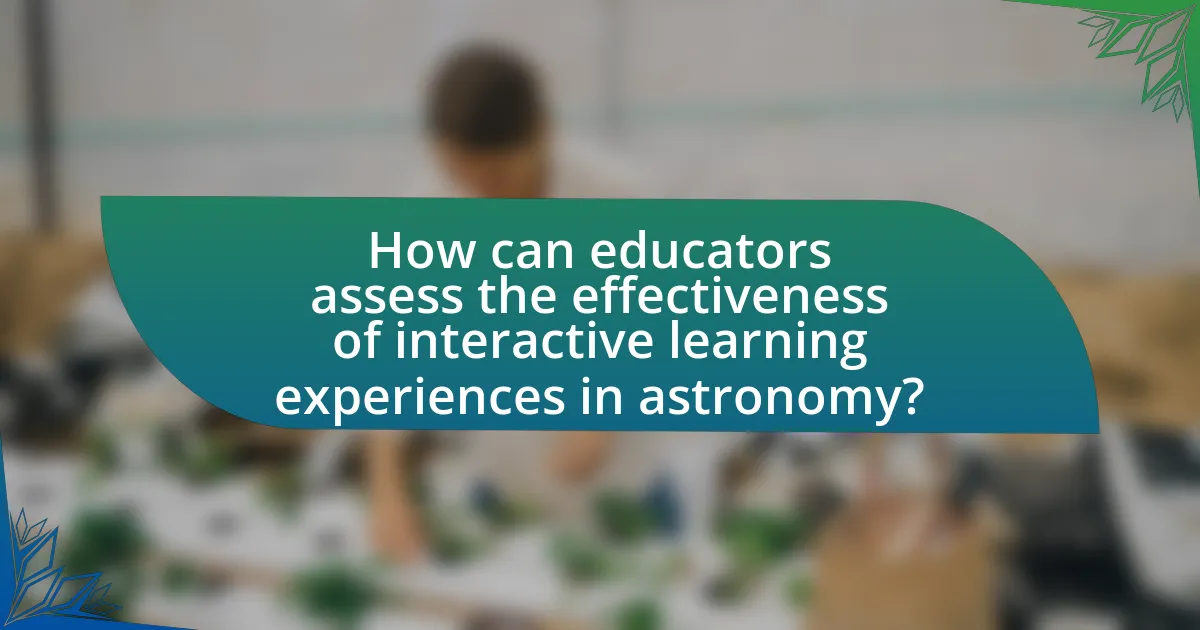
How can educators assess the effectiveness of interactive learning experiences in astronomy?
Educators can assess the effectiveness of interactive learning experiences in astronomy by utilizing a combination of formative and summative assessments, including pre- and post-tests, student feedback, and observational methods. Formative assessments, such as quizzes before and after the interactive experience, can measure knowledge gains, while student feedback through surveys can provide insights into engagement and perceived value. Observational methods, where educators monitor student participation and collaboration during activities, can also indicate the effectiveness of the learning experience. Research indicates that interactive learning can enhance understanding and retention of astronomical concepts, as evidenced by studies showing improved test scores and increased student interest in the subject matter.
What assessment methods can be used to evaluate student engagement in astronomy?
Assessment methods to evaluate student engagement in astronomy include surveys, observational assessments, and performance-based assessments. Surveys can gauge student interest and understanding through structured questions, while observational assessments allow educators to monitor student participation and interaction during activities. Performance-based assessments, such as projects or presentations, provide insights into students’ application of knowledge and enthusiasm for the subject. Research indicates that these methods effectively capture various dimensions of engagement, including cognitive, emotional, and behavioral aspects, thereby offering a comprehensive evaluation of student involvement in astronomy.
How can formative assessments provide insights into student understanding?
Formative assessments provide insights into student understanding by allowing educators to gauge students’ grasp of concepts in real-time. These assessments, such as quizzes, discussions, and observational tasks, enable teachers to identify misconceptions and areas needing reinforcement. Research indicates that formative assessments can enhance learning outcomes; for instance, a study by Black and Wiliam (1998) found that effective formative assessment practices can lead to a significant increase in student achievement, with improvements of up to 30 percentile points. This evidence underscores the role of formative assessments in tailoring instruction to meet students’ needs, thereby fostering deeper comprehension in subjects like astronomy.
What role do student reflections play in assessing engagement?
Student reflections play a critical role in assessing engagement by providing insights into students’ thoughts, feelings, and learning processes. These reflections allow educators to gauge the depth of student involvement and understanding in astronomy activities. Research indicates that reflective practices enhance metacognition, enabling students to articulate their engagement levels and identify areas for improvement. For instance, a study published in the Journal of Educational Psychology found that students who regularly engaged in reflective writing demonstrated higher levels of engagement and academic performance compared to those who did not. This evidence underscores the importance of student reflections as a valuable tool for assessing and enhancing engagement in interactive learning experiences.
How can feedback from students inform future interactive learning experiences?
Feedback from students can significantly inform future interactive learning experiences by identifying areas for improvement and enhancing engagement strategies. When students provide insights on their learning preferences, challenges, and the effectiveness of interactive elements, educators can tailor future experiences to better meet their needs. For instance, a study published in the Journal of Educational Psychology found that incorporating student feedback led to a 20% increase in engagement levels in interactive science courses. This demonstrates that actively seeking and implementing student feedback can create more effective and responsive learning environments, particularly in subjects like astronomy where engagement is crucial for understanding complex concepts.
What strategies can educators use to gather meaningful feedback?
Educators can gather meaningful feedback by implementing strategies such as anonymous surveys, focus groups, and reflective journals. Anonymous surveys allow students to express their thoughts candidly, leading to more honest feedback. Research indicates that when students feel their responses are confidential, they are more likely to provide constructive criticism (Harris, 2018). Focus groups facilitate in-depth discussions, enabling educators to explore specific topics and gather diverse perspectives. Reflective journals encourage students to articulate their learning experiences and challenges, providing educators with insights into student engagement and comprehension. These strategies collectively enhance the feedback process, making it more effective in improving educational practices.
How can feedback be utilized to improve astronomy teaching practices?
Feedback can be utilized to improve astronomy teaching practices by systematically collecting and analyzing student responses to instructional methods and content. This process allows educators to identify areas where students struggle, enabling targeted adjustments to teaching strategies. For instance, research indicates that formative assessments, which provide ongoing feedback, significantly enhance student understanding in complex subjects like astronomy. A study by Black and Wiliam (1998) in “Assessment and Classroom Learning” highlights that effective feedback can lead to a 20% increase in student performance. By implementing structured feedback mechanisms, such as surveys or reflective journals, educators can refine their approaches, ensuring that teaching methods align with student needs and learning styles.
What best practices should educators follow to enhance interactive learning in astronomy?
Educators should implement hands-on activities, utilize technology, and foster collaborative learning to enhance interactive learning in astronomy. Hands-on activities, such as building models of celestial bodies or conducting simple experiments, allow students to engage directly with astronomical concepts, making learning more tangible. Utilizing technology, such as planetarium software or virtual reality simulations, provides immersive experiences that can illustrate complex astronomical phenomena. Collaborative learning, through group projects or discussions, encourages peer-to-peer interaction, which has been shown to improve understanding and retention of material. Research indicates that active learning strategies can increase student performance by up to 50% compared to traditional lecture-based approaches, highlighting the effectiveness of these best practices in astronomy education.
How can educators create a supportive learning environment for astronomy students?
Educators can create a supportive learning environment for astronomy students by fostering collaboration and providing access to interactive resources. Collaborative learning encourages students to work together on projects, enhancing their understanding of complex astronomical concepts. Access to interactive resources, such as planetarium software and simulation tools, allows students to visualize celestial phenomena, making learning more engaging and effective. Research indicates that hands-on experiences significantly improve student retention of scientific knowledge, as demonstrated in studies like those conducted by the National Science Foundation, which highlight the benefits of interactive learning in STEM education.
What resources are available to help educators implement interactive learning in astronomy?
Educators can utilize a variety of resources to implement interactive learning in astronomy, including online platforms, educational software, and hands-on activities. Notable resources include NASA’s Eyes on the Solar System, which allows users to explore space missions interactively, and Stellarium, a planetarium software that provides a realistic night sky simulation. Additionally, the American Astronomical Society offers teaching resources and lesson plans tailored for interactive learning. Research indicates that interactive learning methods enhance student engagement and understanding in complex subjects like astronomy, as evidenced by studies showing improved retention rates among students who participate in hands-on activities and simulations.
